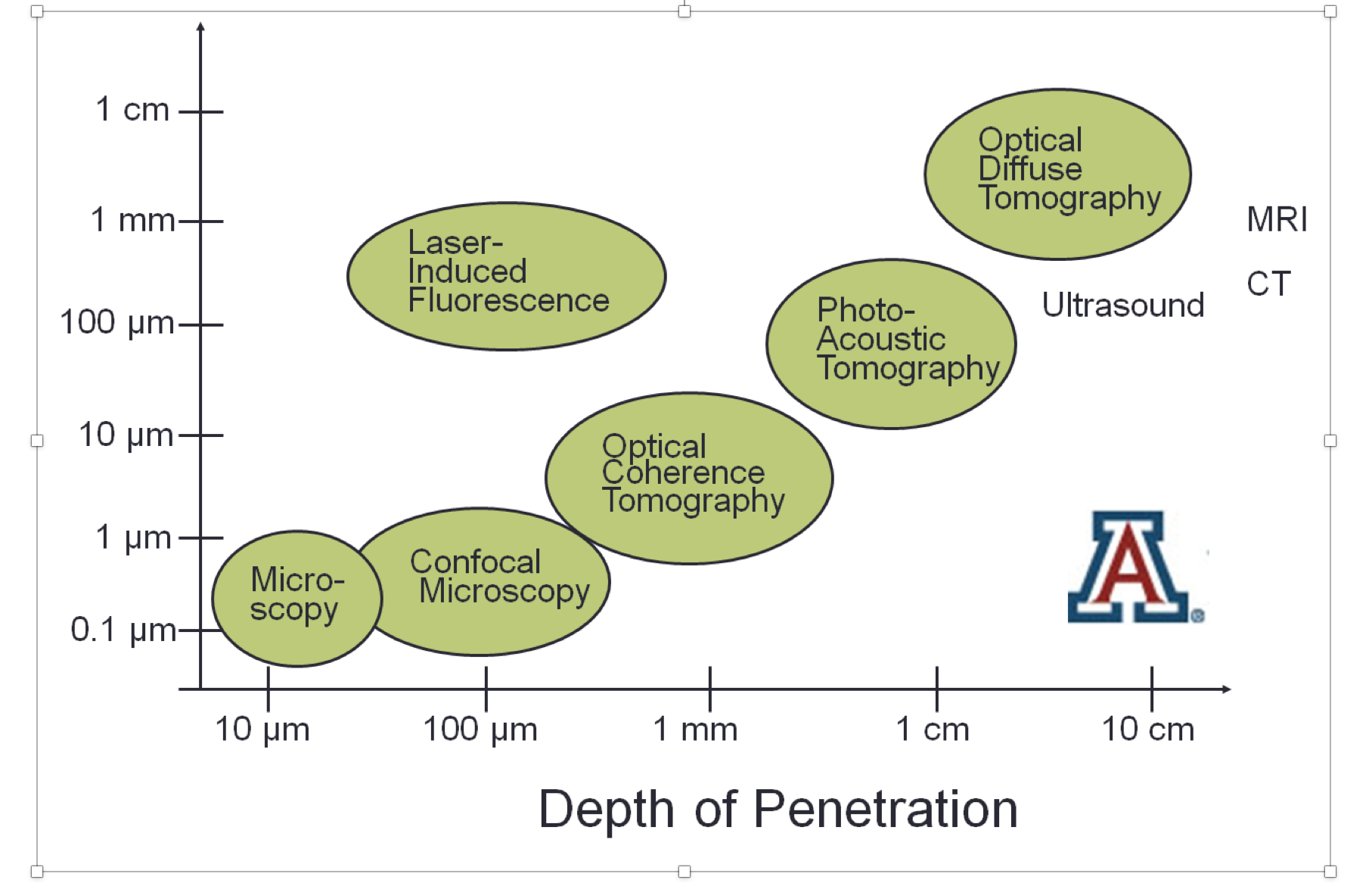By John Black
Optical Coherence Tomography (OCT) is an imaging technology that can analyze tissue structure to a depth of 1-2mm and an accuracy of 1 to 10 microns. It can be used to detect disease conditions that modify tissue structure like arteriosclerosis, glaucoma, tooth cavities, and Alzheimer’s that affects the optic nerve. It supports any procedure that benefits from real-time tissue structure information such as the accurate placement of a drug or device, or to assess treatment effects that change tissue structure such as cauterization or ablation.
OCT gives intuitively interpretable images For example, the cross-section of a healthy coronary artery below where the single-cell layer intima/internal elastic lamina, the media (smooth muscle cells) and adventitia (the strength member of the artery wall) can all be clearly differentiated.
OCT falls between ultrasound and confocal or traditional microscopy in terms of penetration depth and resolution as shown by the following slide (Credit Jennifer Barton – University of Arizona) ;

Image Source: Jennifer Barton – University of Arizona
In the future, we’ll see OCT applied to:
- Real-time precision guidance of injections where the therapeutic must be injected directly into the target tissue (chemotherapy for example).
- Precision placement of stem cells which must be placed in the tissue that they are intended to treat so that they can be “programmed” by the molecular environment around them.
- Precision placement of electrodes for neuro-modulation. For example, in the treatment of tremors or chronic pain, where OCT can not only identify the nerve bundle embedded in the tissue but also can identify the specific part of the nerve bundle or even an individual nerve requiring stimulation or ablation.

Additionally, OCT will benefit from cost reduction by leveraging recent developments and methodologies from compact LIDAR for autonomous vehicles including on-chip designs. All of those optical techniques and assembly techniques could be applied to OCT. However, today the nature of the OCT signals need to be k-space renormalized, which was very CPU intensive. A new class of compact, all-fiber / all-solid-state, unidirectional, linear-in-k swept sources with integral fine-grained k-clocks under development will obviate the need for k-space renormalization and thereby speed up the ability of the imaging hardware to process and display the OCT data.
About the Author:
John Black has over 20 years of experience in the medical, scientific/research and industrial segments of the photonics industry and currently consults in laser design and development, optical coherence tomography (OCT), medical device design and development, image-guided surgery and optical remote sensing. He founded Triermain in 2011. Triermain, LLC., is a San Francisco Peninsula-based R&D / Technology consulting firm specializing in the development of lasers and novel fiber optics techniques, and applying these developments in biophotonics, image-guided surgery, life sciences, and remote sensing. (Insert link to IEEE-CNSV presentation in “Links” here)
John has a B.Sc. in Chemistry with First Class Honors and a Ph.D. in Physical Chemistry from the Univ. of Nottingham. John has 11 issued patents and more pending applications in the fields of laser development, biophotonics, optical diagnostics, and medical devices.